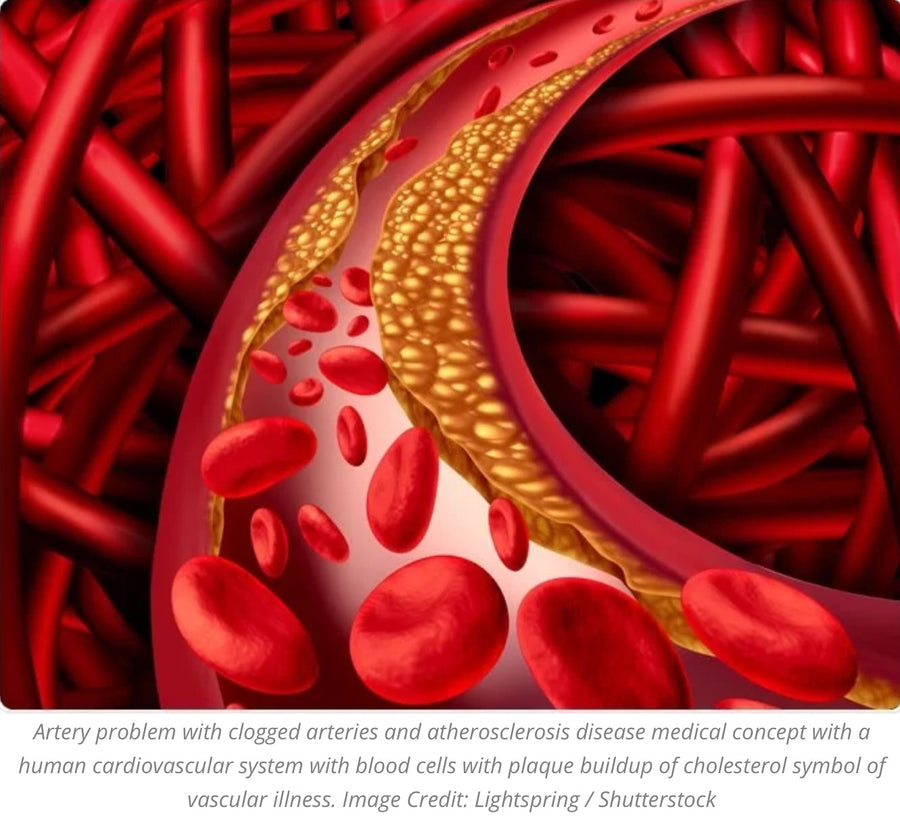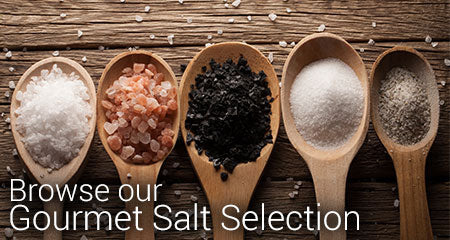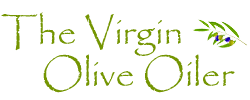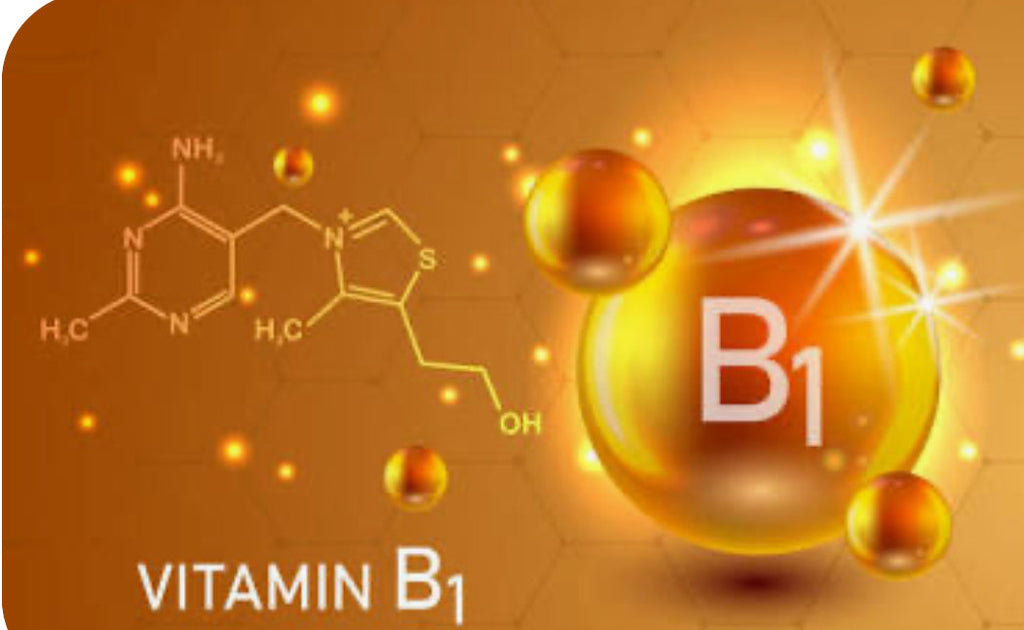Cholesterol: Good? Bad? Should I worry? - Blog # 44

Hello Everyone! Welcome to another Friday blog. Today I wanted to address the ever-concerning questions and myths about cholesterol and the health of our arteries. Cholesterol has a bad rap. The focus seems to be on getting it lowered - usually through eating a “low-fat, healthy whole-grains” diet - and taking medications, like statin drugs. So, what is all the fuss really about. What IS cholesterol and why it is important?
Cholesterol is a lipid (fat) molecule that is an essential component of animal cell membranes. It is in every cell membrane and many organelles of cells. It is only found in animal products and is involved in innumerable functions of the body, including immune health. It is a precursor for steroid hormones (sex hormones: testosterone, estrogens, progesterone…cortisol, bile salts as well as vitamin D! We all know the importance of our hormones, but if we can’t make bile salts we can’t absorb vitamins (A,E,D,K, and omega 3) and break down food appropriately. Cholesterol is also required to make vitamin D. Vitamin D is synthesized using a form of cholesterol in our skin when exposed to sunlight/UV light. It is essential for our immune response, absorption of calcium, magnesium and phosphorus to keep bones, teeth and muscles strong and many other important functions.
Cholesterol composes roughly 30% of all animal cell membranes - and even more in brain cell membranes - it is in the membranes of our organelles (such as mitochondria) inside the cell as well - telling us how important it is to our survival. A single heart cell contains roughly 3-5,000 mitochondria. WOW. Our liver normally makes all the cholesterol it needs - roughly 10,000 mg - through an intricate 37-step process - to complete all the cellular processes it needs to accomplish. It makes ZERO sense that eating an egg with 200mg of cholesterol would have some horrible effect on your body. In fact, it’s quite the opposite. Pasture-raised eggs are not only a complete protein, but contain ALL the fat-soluble vitamins! It contains everything needed to create a whole new organism! Cholesterol is responsible for maintaining fluidity of cell membranes, intracellular transport, signaling and nerve conduction. It helps facilitate speed of transmission along nerve tissue by providing insulation for more efficient conduction (myelin sheath). Obviously, loss of this layer results in decreased nerve conduction speed and is thought to be the cause of multiple sclerosis and many other neurological disease processes.
Wow! Sounds like it’s vitally important!! I can only imagine the horrible side-effects of statin drugs - you can’t really make new cells appropriately - think of the brain for example. The heart and the brain have the most mitochondria and consume the most O2 and energy! That explains a lot when we look at the side-effects of statin drugs. Cholesterol is very susceptible to oxidation. In the liver, cholesterol is oxidized into bile acids. About 95% of these bile acids are resorbed in the intestine - the rest is excreted in feces. This actually speaks to how important cholesterol is if your body tries to recycle 95%!!!
Cholesterol is a lipid (fat) and waxy, so not very soluble in water. It gets packaged in different sizes/densities of lipoproteins - like cargo vessels transporting cholesterol to its destination - to allow emulsification in the blood. “Lipoproteins are critical for absorbing and transporting dietary lipids (fats) by the small intestine and moving lipids from the liver to peripheral tissues and back from peripheral tissues to the liver and intestine. They are also crucial for transporting toxic foreign hydrophobic and amphiathic compounds, including bacterial endotoxins from areas of invasion and infection.” Lipoproteins have varying densities. “In order of increasing density, they are chylomicrons, very-low-density lipoprotein (VLDL), intermediate-density lipoprotein (IDL), low-density lipoprotein (LDL), and high-density lipoprotein (HDL). Lower protein/lipid ratios make for less dense lipoproteins.” HDL is considered the good cholesterol, whereas LDL (esp. VLDL) has always been considered bad - but it also has super important jobs. Let’s take a closer look at differences and function.
Chylomicrons - primarily made up of triglycerides and a small amount of protein. They are the least dense of the lipoproteins. Responsible for transporting lipids from the intestinal tract to cells in the body. They “carry fats from the intestine to muscle and other tissues in need of fatty acids for energy or fat production. Unused cholesterol remains in more cholesterol-rich chylomicron remnants, and taken up from here to the bloodstream by the liver.”
VLDL - these are the tiny little BBs that damage our blood vessels. They consist primarily of triglycerides (TG) - so the higher your triglycerides, the more damage occurs - some cholesterol and low in protein. These are made in the liver from carbohydrates and are “responsible for delivering triglycerides to cells in the body, which is needed for cellular processes. When the liver is overwhelmed with carbohydrates (sugar/starch/grains) it can’t keep up and begins to make more triglycerides that are stored as fat - the liver becomes fatty - this is NAFLD (non-alcoholic fatty liver disease). “NAFLD is the most common chronic liver disease and is characterized by excess TG accumulation within the liver. It is associated with obesity, type 2 diabetes and dyslipidemia, and commonly occurs in the setting of insulin resistance.” As triglycerides get delivered to cells, VLDL is made up less of fat and more of protein, leaving cholesterol on the molecule. As this process occurs, VLDL will eventually become an LDL molecule.” These are “molecules produced by the liver from triacylglycerol and cholesterol which was not used in the synthesis of bile acids.” The more important blood test to consider is your triglyceride level. You want it to be between 30-60. Above 60, damage to your blood vessels occurs.
LDL - consists of more cholesterol than triglycerides and protein. It is responsible for carrying cholesterol from the liver to other tissue cells - such as muscle - that require it. LDL receptor function is vital to the processing of cholesterol. “LDL receptors are used up during cholesterol absorption.” LDL receptors are found in the liver and throughout other tissues in the body. Cholesterol levels regulate the formation of receptors! This can be a problem with too many planes and nowhere to land scenario. “Oxidized LDL are not recognized by the LDL-receptor Apo (B/E) but are taken up by macrophages in a nonregulated manner through the scavenger-receptor pathway, which leads to the formation of foam cells, the hallmark of arteriosclerotic lesions.The presence of large lipid-laden foam cells in intimal lesions is one of the most prominent and consistently found features of the atherosclerotic lesion both in humans and in experimental animals.” So, rather than a total LDL blood work number, it’s much more important to test particle size. Check your Apo B/E levels. The higher your Apo B levels, the more interaction with the endothelial lining. Lipoprotein (a) is another marker that causes damage to the endothelium. If you smoke, don’t exercise, eat poorly - you will drive inflammation and create an environment for damage to start.
HDL - consists of a larger amount of protein (more dense), made in the liver and intestines. HDL has roughly 200 jobs in the body and is thought of as the clean up crew. These “particles are thought to transport cholesterol back to the liver, either for excretion or for other tissues that synthesize hormones, in a process known as reverse cholesterol transport (RCT).” **super important!! We want our HDL cholesterol to be high - The most telling information about your lipid panel on bloodwork is your Triglyceride/HDL ratio. You want that ratio <1.0 (.5-1.0). If your ratio is >1.5, you have strong IR (insulin resistance) and have a 16-fold increased risk of heart disease!!! In older individuals, higher HDL and overall cholesterol is associated with better health and longevity. A study published in JAMA looked at 1027 men over a 26-year period and concluded: “A decline in serum total cholesterol levels may be associated with early stages in the development of dementia.” If higher cholesterol as we age provides protection for the brain, does it make sense to give an older person a statin and block their ability to make cholesterol? 😱 It’s irresponsible and harmful. FYI - some of the longest living individuals have HDL levels of 93-105!!!!
When you eat a nutritionally poor high-carbohydrate diet - such as baked goods with refined flours, highly-processed foods, HFCS (high fructose corn syrup), sugars and starches - This type of diet drives up glucose and insulin and depletes many important vitamins and minerals that are already lacking in these foods. High insulin levels inhibit NO (nitric oxide) that relaxes and dilates blood vessels. High insulin also stimulates the endothelial cells to proliferate (grow and divide) - thickening the blood vessel wall and impeding blood flow. We humans have 60,000 miles of blood vessels.😳 Holy moly!
The lining (endothelium) of normal blood vessels is one-cell-layer thick, smooth and slick. It is covered by a protective gel layer with protein and sugar sensors called the endothelial glycocalyx that has multiple functions: “determines vascular permeability, attenuates blood cell–vessel wall interactions, mediates shear stress sensing, enables balanced signaling, and fulfills a vasculoprotective role.” When damaged, it loses its protective and sensing functions. Many things can damage the glycocalyx - high blood pressure (sheer stress), high blood sugar (glycating), high insulin (proliferation), LPS (lipopolysaccharides) bacterial toxins from pathogens or leaky gut, heavy metals (mercury, lead, arsenic…) spike proteins (SARS-coV2) and more. This prevents the endothelial cells from properly producing NO (nitric oxide).
Further, high glucose and insulin causes the liver to make more triglycerides - the liver becomes fatty, triglyceride levels rise - since they travel with VLDL cholesterol (the BBs). As they hit the vascular lining they create small lesions - like potholes - that become inflamed creating sticky areas that trap many things floating by - calcium, cholesterol, fibrin, fatty substances and even cellular waste products. This stimulates an immune response and white blood cells come in. This is where the formation of foam cells start - over the area that is rough and sticky. This ‘soft plaque’ eventually can calcify (calcium is the body’s bandaid) over time to form a ‘hard plaque’. The thickened blood vessel is more narrow and leaves less room for blood to flow and increases blood pressure. This reduces O2 delivery to tissues - in the brain it causes dementias (like Alzheimer’s). Now we have atherosclerosis, or hardening of the arteries.
“Endothelial dysfunction in both coronary and peripheral arteries is a consequence of prolonged and/or repeated exposure to cardiovascular risk factors that induce oxidative stress.” The tinier the blood vessel is, the more at risk that vessel is. Vision changes, erectile dysfunction, decreased kidney function and peripheral neuropathy are all signs of micro-vascular damage - and are signs that you should get your arteries checked out. Think of a water hose when you put your thumb over a portion of the water. Hmm…not good. This can lead to occlusion of the artery or blood vessel, or dislodging of a “clot” getting dislodged and causing a stroke or heart attack. You can get a coronary calcium score test and see the level of calcification on your arteries. You also need a high-sensitivity CRP (cardiovascular inflammatory marker) to see how much inflammation is going on. You want that to be <.5 and definitively <1.0.
When your cholesterol is high, most MDs will prescribe statin drugs. In the US, statin drug sales in 2022 were $14.9 BILLION! 😳 and are expected to increase by 3.2% from 2023-2028 - to $18.1B. There is huge discrepancy across the literature about their benefits. When you remove skewed studies funded by drug companies, the overwhelming consensus is that they cause more harm than good. They are a metabolic disaster and increase your risk of metabolic diseases and dementia - primarily because they damage your mitochondria. They don’t actually decrease your risk of death either. You need to treat 83 people daily for >2 years to prevent 1 cardiovascular incident - and at a HIGH price due to side effects. These drugs directly interfere with your body’s ability to make cholesterol…even when it’s really needed.
I’ve seen the effects of long-term use of statin drugs in many of my patients resulting in significant functional decline in muscle strength and functional independence. Patients have gone from being completely independent - even able to mow their own yard - to being unable to get up from a chair without assistance = profound muscle weakness. Why? It interferes with with many normal functions in the body, damages mitochondria and blocks their function - including blocking Co-Q-10 that is required to make ATP (energy). It causes myopathy…necrosis, muscle cell apoptosis (death), inflammation, stiffness, pain and significant muscle wasting. The weakness can be irreversible after years. Guess what? YOUR HEART IS A MUSCLE. It can cause heart failure!
Common statin side effects include:
- Headache
- Difficulty sleeping
- Flushing of the skin
- Muscle aches, tenderness, or weakness (myalgia)
- Drowsiness
- Dizziness
- Nausea or vomiting
- Abdominal cramping or pain
- Bloating or gas
- Diarrhea
- Constipation
- Rash
- Low levels of blood platelets
- Nausea
- Hair loss
- Pins and needles sensations, such as pricking, numbness, or tingling on your skin
- Liver inflammation, which can make you feel like you have the flu
- Pancreas inflammation, which can cause stomach pain
- Skin problems such as rashes or acne
- Sexual problems, such as erectile dyfunction or a low sex drive
- Myositis, which is inflammation of the muscles. The risk of muscle injury increases when certain other medications are taken with statins. For example, if you take a combination of a statin and a fibrate -- another cholesterol-reducing drug -- the risk of muscle damage increases greatly compared to someone who takes a statin alone.
- Elevated levels of CPK, or creatine kinase, a muscle enzyme that when elevated, can cause muscle pain, mild inflammation, and muscle weakness. This condition, though uncommon, can take a long time to resolve.
- Rhabdomyolysis, extreme muscle inflammation and damage. With this condition, muscles all over the body become painful and weak. The severely damaged muscles release proteins into the blood that collect in the kidneys. The kidneys can become damaged trying to eliminate a large amount of muscle breakdown caused by statin use. This can ultimately lead to kidney failure or even death. Fortunately, rhabdomyolysis is extremely rare and happens in less than one in 10,000 people taking statins.
If you have a lot of inflammation in your body, damage is occurring all over, not just in your blood vessels. Interestingly, foods that are high in saturated fats are typically high in cholesterol as well. Human breast milk is roughly 50% fat with a large portion being saturated fat. It’s REQUIRED for development and building body tissues - it is illogical that it should be avoided. This alone tells us how important good fat is in our diet - cholesterol is NOT the bad player here! It is an innocent bystander. So, how can we keep our blood vessels smooth, elastic and super healthy? What we eat has a huge impact on our vascular health.
Consuming HP-EVOO (high polyphenol extra virgin olive oil) is one of the best ways to prevent atherosclerosis. “Olive oil bioactive compounds exhibited a potent capability to attenuate oxidative stress and improve endothelial function through their anti-inflammatory, anti-oxidant, and anti-thrombotic properties, therefore reducing the risk and progression of atherosclerosis.” EVOO also improves the lipid profile by increasing HDL and lowering LDL and triglyceride levels, reduces blood pressure and oxidative stress, inhibits lipoprotein oxidation - thus preventing atherogenesis. Numerous epidemiological, clinical and experimental studies show “endothelial damage triggered by oxidation can be diminished or reversed by the compounds of olive oil, a readily available antioxidant food source. Olive oil bioactive compounds exhibited a potent capability to attenuate oxidative stress and improve endothelial function through their anti-inflammatory, anti-oxidant, and anti-thrombotic properties, therefore reducing the risk and progression of atherosclerosis.”
Studies show EVOO inhibits the oxidation of LDLs, enhances HDLs ability for RCT (reverse cholesterol transfer) in a concentration-dependent manner!! So, the higher the polyphenol concentration - and the more EVOO you consume - the more cholesterol is removed from where it should not be. Furthermore, the shape of Oleic Acid in EVOO enhances cell membrane fluidity, enhancing membrane health and function. “Phenolic compounds, especially hydroxytyrosol and oleuropein, dose-dependently inhibit LDL and HDL oxidation in vitro and in vivo, repress superoxide-driven reactions, and break the chain-like propagation of lipid peroxides…Consuming EVOO increases the postprandial concentration of phenolic compounds in the plasma and in LDL and HDL, which may explain the protective effect of phenolic compounds.” This means the antioxidant properties in EVOO are elevated in the bloodstream after eating - scavenging ROS (reactive oxygen species) and preventing oxidation of LDLs.
So, EVOO can naturally BALANCE your cholesterol - specific to your body’s requirements - to maintain homeostasis, both protecting cells and creating new cells! Check out my personal journey - Blog # 22!! Several recent studies have demonstrated reversal of damage to blood vessels when oleic acid is the choice fat. How does it do this? Oleic Acid (OA) to the rescue! Studies show OA interferes directly with the inflammatory response that leads to atherosclerosis, resulting in more pliable, smooth artery allowing unimpeded blood flow. The polyphenols in EVOO are anti-inflammatory and also play a role in normalizing cholesterol ratios. However, The combination of OA + antioxidants accomplished the most cholesterol lowering activity without affecting cell viability.
In addition to HP-EVOO, there are other functional foods that help to protect our blood vessels. Omega 3’s from fatty fish, polyphenols, flavonoids and phytochemicals from herbs, spices (turmeric), garlic and many others. Eating the right kind of high-fiber carbohydrates - variety of colorful fruits and veggies, dark leafy greens, high fiber foods, drinking enough water, getting plenty of exercise, sunshine and light therapy (infrared and near infrared) - check out Blog # 89, stress management - yoga and meditation - and optimizing sleep - all contribute to the health of our blood vessels. Interestingly, the WHO recognizes that shift-work and loss of sleep is a probable carcinogen!! Fiber is important because it is the food for you microbiome. Fiber also binds to excess cholesterol for excretion.
So, until next time my friends…Drink, Drizzle, Digest HP-EVOO 2-4T raw daily, - protect your endothelium and glycocalyx - use more for cooking and drizzling onto your food - eat the rainbow of organic or wild-sourced veggies (7-9 C) and low-glycemic fruits (to get the rainbow of gut microbes!) Eat wild-caught, pasture-raised, grass-fed, get plenty of sunshine + supplement magnesium, zinc, vitamin D3 + K2, get your trace minerals and electrolytes with good sea salt *Himalayan was formed before plastics, eat foods high in lutein, drink your body weight in oz of water, get a good pre/probiotic (if you have wiped out your gut microbes with antibiotics), consume digestible and indigestible fiber for your gut microbes, fermented foods for the post-biotics, adaptogens (such as mushrooms) and methylation donors (kale, beets, spinach, cruciferous, lion’s mane…), marjoram, rosemary, oregano, parsley and other herbs to detox, enhance overall health and reverse aging and disease, exercise your body and mind, add a few minutes of mindful meditation to your day to combat stress, take a hot epsom salt bath and follow with a cold shower/ice plunge, remove EMF (electromagnetic frequency) devices and blue light, use IR (infrared) from incandescent lighting, fireplace, non-toxic candles or fire in the evening to enhance sleep and...turn off the light!! #HP-EVOO
This blog is intended for informational purposes only. Discuss strategies with your Healthcare Practitioner.







Comments (1)
This is really good information! I’m not stressed about eating eggs now.